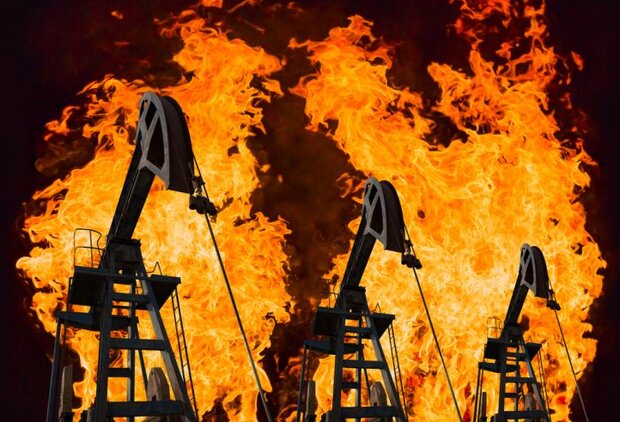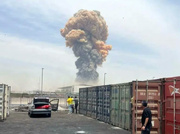The demand for crude has been on a downward trend as most of the major cities of the world still remain in lockdown as Western Texas Intermediate (WTI) plunged 40 percent on Monday trading at negative $37.63. This is the first time in history that US oil futures have entered the red zone.
Oil prices collapsed to more than 60 percent since the beginning of 2020, helping pave the way for Saudi Arabia and Russia to co-ordinate a record 9.7 million barrels a day of output cuts until end of June at OPEC+ April 10 meeting. However, the meeting failed to produce results.
Storage facilities are now struggling to deal with the glut of oil caused by the reduction in demand. Analysts say negative prices could return for June, given the surplus environment and absence of meaningful demand recovery. The fall on Monday was also partly a result of market technicality, with Tuesday marking the final trading day of WTI futures contract for delivery in May.
WTI contracts for delivery in June were still trading above $20 a barrel, even though they had fallen from near $60 at the start of the year. Brent crude, the international benchmark, is better insulated as it is a seaborne crude, making storage less of an issue as long as traders can charter supertankers. Brent price is hovering around $26 a barrel on Wednesday.
The economic impact of lockdowns has resulted in bleak economic figures all over the world.
According to the Tehran-based economic daily Financial Tribune, the most biting of Iran’s economic challenges for the new year (started March 21) are the US sanctions, depletion of foreign reserves combined by economic losses due to coronavirus outbreak and disruption caused to business that would reduce tax revenue.
IMF predicts the country’s economic growth (real GDP) to reach 3.1 percent in 2021 after a contraction of minus six percent in 2020.
With the official unemployment rate at 10.6 percent last year (ended March 21) we are expected to brace for a tough year ahead due to the impact of COVID-19 outbreak.
Low oil prices are expected to have a minimal impact on Iran. Due to sanctions, Iran’s economy has gradually shed its dependence on oil exports. When US President Donald Trump exited the JCPOA and re-imposed sanctions on Iran in May of 2018, Iran’s oil exports stood at around 2.5 million barrels a day. The six-month waivers granted to some countries ended April 2019, at which point Iranian crude exports dropped to some 1-1.3 million barrel a day. By March most estimates valued Iran crude exports to 250,000 barrels a day.
Today Iran’s exports are even below that level making this short-term oil shock impact on Iran minimal.
The real impact on today’s oil prices has been caused by lockdowns in major cities in countries that depend on oil imports, including US, China, Japan, India, and so on. Let’s have a brief look at some of them.
The economic projections in these economies along with their ability to successfully contain the COVID-19 outbreak will to a great extent determine the demand for crude in the future.
USA.:
Even though the US was the world’s largest oil producer due to shale oil revolution but it has imported oil from neighbors in south and north, Mexico and Canada respectively.
If present oil prices persist long enough it would put the final nails on the coffin of the US shale industry. Most of US shale producers budgeted for oil between $55-65 per barrel in 2020, anything below would make the industry unfeasible.
The dire situation of many Americans living in large cities like New York confirmed how close to the edge many Americans lived, with pay and benefits eroding as corporate profits surged. Last week ill patients lined up overnight in freezing cold to wait for COVID-19 testing.
In one instance 29 fatalities were reported at one nursing home in New York with 227 beds. Fatality rates continue to spike in nursing homes throughout US
On Thursday more than 5.2 million Americans were added to unemployed workers as jobless claims exceeded 20 million in four weeks. Such statistics have not been seen since the great depression.
Last Wednesday the Commerce Department declared the steepest monthly drop in retail sales since record-keeping began 30 years ago. The US Federal Reserve reported industrial production had recorded its biggest decline since 1946.
“A national shutdown is not a sustainable long-term solution,” US President Donald Trump told reporters on Thursday adding that “lot of states would open relatively soon.” Many consider Trump’s decision as premature just like his early assessment of what he has referred to as “Chinese flue”.
Trump has also claimed that the US has passed the ‘peak’ death figures. Many question his assessment as the US has the world’s highest number of infections and deaths, with 792,938 COVID-19 infections and over 42,518 fatalities until Tuesday.
With unemployment hitting 17 percent in April, compared to 4.4 percent in March the question is whether the wave of job destruction has also peaked despite stimulus and relief measures?
CHINA:
China’s official GDP shrank 6.8 percent for the first time since 1979 as the world’s second-largest economy braced itself for the pandemic.
China is known as the World Factory and its economy depends on global demand. For example, one major market for China is Europe, where the death toll is approaching 100,000 and demand, is not expected to rise this year.
On Friday (April 17) China revised the death toll in Wuhan city by 50 percent, adding 1,290 fatalities with a new total of 3,869 fatalities and confirmed nearly 84,000 infections nationwide. Officials in Wuhan, Hubei Province, said the revised figures were the result of new data received from multiple sources and a shortage of testing capacity that kept many infected patients not accounted for.
In December 2019, Chinese authorities started investigations into mysterious viral pneumonia, reported cases to WHO on December 31. WHO officials were allowed to visit China and investigate the outbreak on February 10.
China has been praised for its handling of the crisis and the unprecedented restrictions instituted. WHO Director-General Tedros Adhanom Ghebreyesus has hailed China for the “speed with which it detected the outbreak” and its “commitment to transparency”.
Trump has called WHO “China-centric” and perhaps it is also because of Ghebreyesus’ comments that he has decided to cut off funding to the organization.
JAPAN:
Japan is the world’s fourth-largest oil importer with daily consumption of over four million barrels. Japan’s customs-cleared crude oil imports fell 0.7 percent in March from the same month a year earlier, the Ministry of Finance said Monday.
Japan’s oil refiner Idemitsu Kosan expects Japan’s demand for oil products to fall by about 20 percent in the April-June quarter from a year earlier. Due to the reduction in demand, Japanese oil refiners are seeking to delay imports.
Two weeks have passed since the government declared a state of emergency in Japan where suspensions and reductions at assembly plants began mid-February. There is growing concern among Japanese automakers that production will be suspended for a long time, and restaurants and retailers are looking for ways to survive under the assumption that temporary closures and shorter working hours will be prolonged, reports Japan Times.
Prime Minister Shinzo Abe promised on Thursday to give a one-off sum of $930 to every citizen of Japan in a step to respond to the COVID-19 outbreak as he declared a state of emergency across the whole country. It will run until May 6.
Tanks at key energy hub in Oklahoma could hit their limits within three weeks as traders are willing to pay others to take that oil for delivery in May off their hands, so long as they also take the burden of figuring out where to keep it.
INDIA:
With 3.1 million barrels a day of lost demand, oil demand slumped 70 percent in India, as the third-biggest crude buyer imposed the planet’s largest national lockdown. India’s March 25 decision to impose a three-week shutdown ended April 15, but President Narinder Modi extended it to the third of May.
The average price of Indian basket for crude was $33.36 a barrel in March compared to $71 in April 2019 – the first month of the financial year. On April 15 the price slipped to $19.32. The crude price was predicted to further fall to $10 despite the production cuts as the world was soon running out of storage space.
India imports 82 percent of its crude accounting for 20 percent of India’s whole merchandise imports.
Some important dates
On 31 December a cluster of cases of pneumonia in Wuhan was reported to WHO.
On March 11, alarmed with the spreading level and severity, and by alarming levels of inaction, WHO made the assessment that COVID-19 can be characterized as a pandemic.
On Monday the WHO Director-General said that the “worst” of the novel coronavirus has yet to come.
The number of confirmed cases on Tuesday stood at 2,495,994, 171,255 deaths and 571,971 recoveries.
Oil prices and the global economy will take a while to recover from this pandemic and maybe some aspects of the present situation will remain permanent bringing about a new world order politically and in socially. Only time will show.
Frist published in Tehran Times





















Your Comment